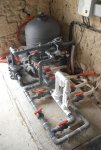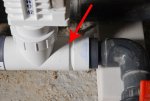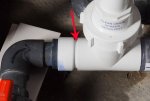Not being a fluid engineer, thought I would ask here;
I have 1.5" piping and have just installed both a new chlorinator and VS Pump. The max speed for the pump is 3000rpm and the minimum is 600rpm. To a point I want to use the slowest speed that I can with the pump, subject to keeping the pool clean, to save on electricity.
My problem is that the minimum flow rate through the Pool Pilot seems to be 2100rpm - as below this it shuts down, which is therefore not benefiting my electricity bill much.
Would changing the pipework to 2" all around, as much as I can, help give a greater flow through the Pool pilot? Looking at the photo below, any thoughts or suggestions?
I have 1.5" piping and have just installed both a new chlorinator and VS Pump. The max speed for the pump is 3000rpm and the minimum is 600rpm. To a point I want to use the slowest speed that I can with the pump, subject to keeping the pool clean, to save on electricity.
My problem is that the minimum flow rate through the Pool Pilot seems to be 2100rpm - as below this it shuts down, which is therefore not benefiting my electricity bill much.
Would changing the pipework to 2" all around, as much as I can, help give a greater flow through the Pool pilot? Looking at the photo below, any thoughts or suggestions?






